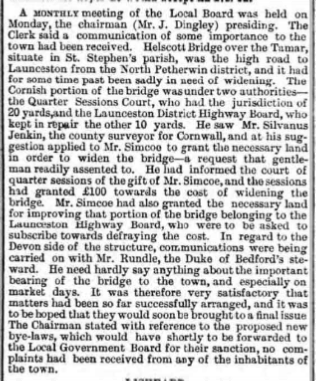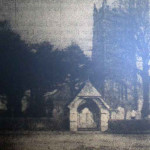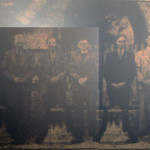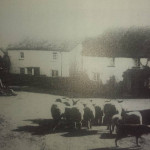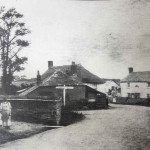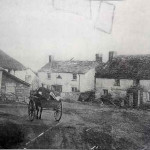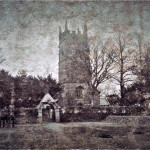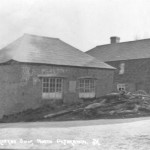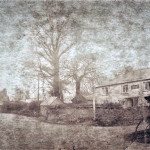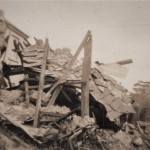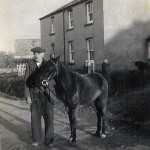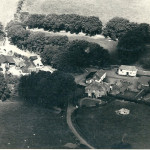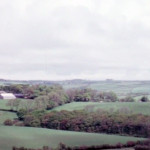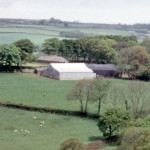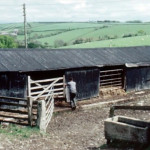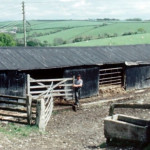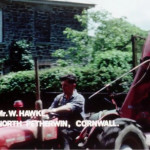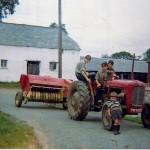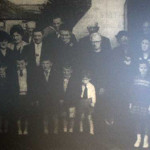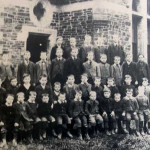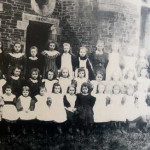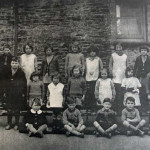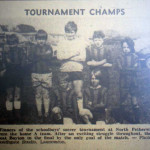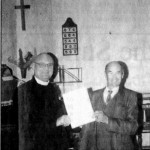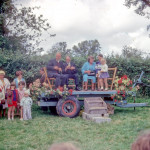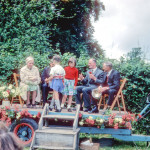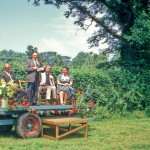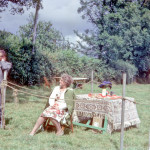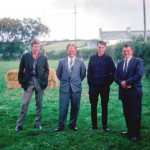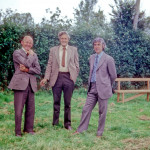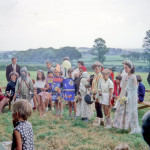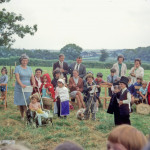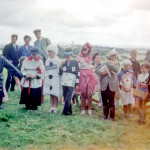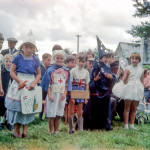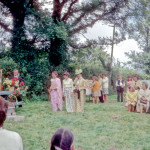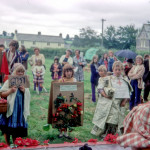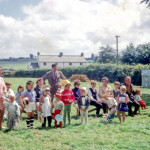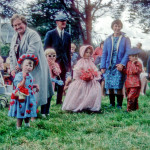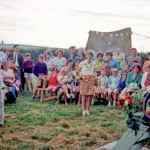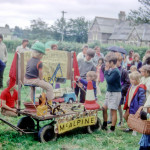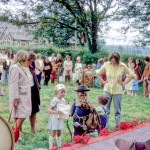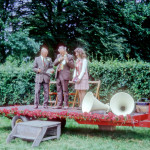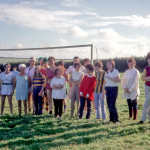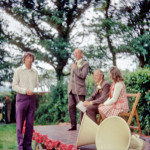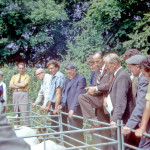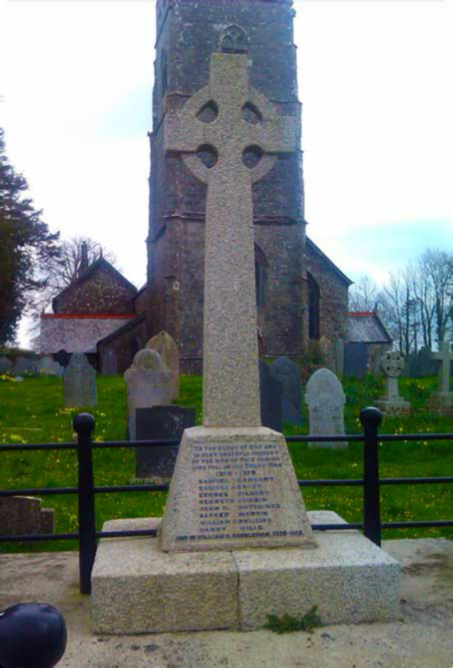.
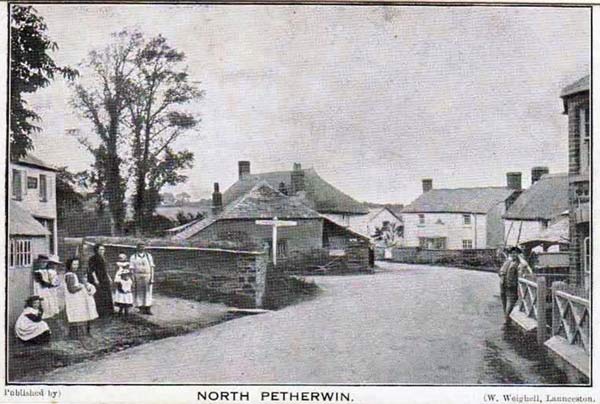
North Petherwin is a parish and village in northeast Cornwall. The village is situated five miles northwest of Launceston on a ridge above the River Ottery (Attery) valley.
North Petherwin is a rural parish which has transferred between Devon and Cornwall in the past. Historically, the Dukes of Bedford have been major landowners in the parish. As well as the church town, settlements include Hellescott, Brassacott or Brazzacott, and Maxworthy. Penheale Manor has land within the parish.
It is considered that the original church was probably a Field church or a private chapel of the grange of some monastery or other religious settlement, most of which had farm buildings on their estates, to which often chapels were attached. The majority of Churches like North Petherwin, were built during the middle ages, but with the passing of time serious deterioration would set in and many were restored during the reign of Queen Victoria, North Petherwin included.
Although the church is built on a Celtic site there are no remains of a Celtic building. The first translator of the scriptures into Anglo-Saxon was Aldhelin, Bishop of Sherborne in 709 and it wasn’t long before Cornwall and Celtic sovereignty surrendered at Hengist Down (Hingston Down), near Callington, to King Egbert. In consequence of this, the Cornish bishop acknowledged the Archbishop of Canterbury as his superior, and the King of Wessex acquired lands in Cornwall and Devon for the royal estates. Whereas up till now the Anglo-Saxons had divided the country into a number of small kingdoms, these were united finally under Egbert, who thus became the first King of England in 838. Egbert gave to the Bishop of Sherborne three Cornish estates, “one of which was Lanwithian, or Lawhitton. This included the future parishes of Dunheved, Lawhitton, Lezant, Trewen and South Petherwin.” The episcopal estate appears to have been carved out of properties belonging to the native church. The unit broken up, in this case, was a district seemingly known as Petherwin. The only clue to this being the names of the two parishes of North and South Petherwin, which share the name and are both dedicated to the Celtic saint Paternus. In the course of the English conquest, North Petherwin was annexed to the royal demesne (estate).
North Petherwin with its mother church of St. Paternus, continued to be the ecclesiastical centre of a large district; but the principal names in Stratton, because the King of Wessex appointed officials to administer the crown lands and keep the colonists in order. The kingdom was divided into “shires” and the shires into “hundreds.” In the will of King Alfred he bequeathed to his son, Edward, Stratton and with it probably its dependencies in Triconshire; that is, in the future hundreds of Trigg, Lesnewth and Stratton.
By 1050 the two bishoprics of St Germans and Crediton became one at Exeter and the old tribal divisions of Cornwall were reorganised on the English model as “hundreds.” Triconshire, which included Werrington and North Petherwin, became the hundred of Stratton. Just before the landing of William the Conqueror at Hastings, North Petherwin was part of the royal estate, as has been pointed out. As such it descended to Gytha a pious woman, the wife of Earl Godwin and mother of Harold.
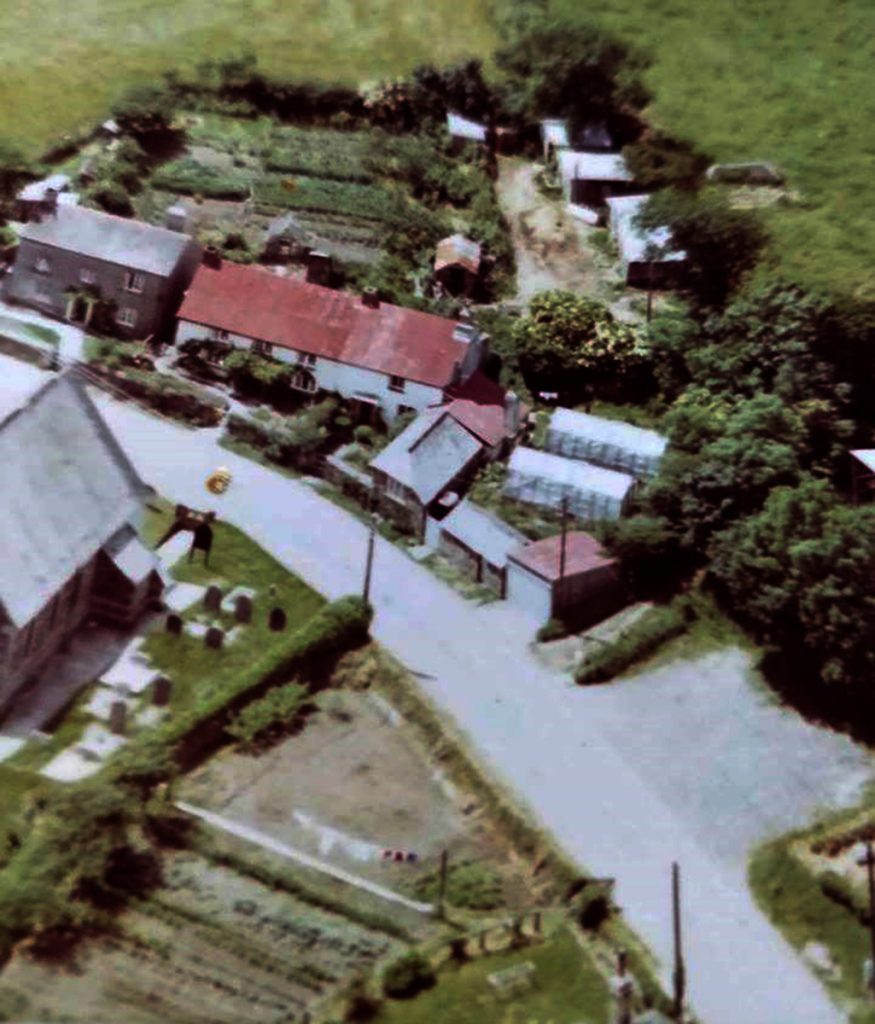
St. Paternus Church Memorial Inscriptions
Vicars of North Petherwin
1656, July 8, Isaac Rowse.
1681, May 18, Digory Cradacott.
1728, Apr. 12, Edmund Herring.
1785, June 1, Christopher Cunningham Vickery.
1793, Apr. 23, Robert Sleeman.
1796, Nov. 25, William Elford.
1833, Feb. 14, John Kingdon
Non-Conformist Memorial Inscriptions
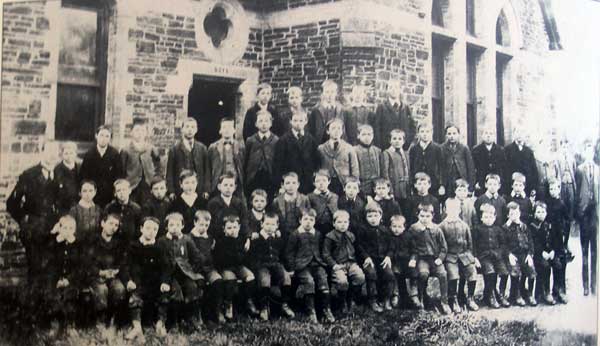
The School Board was formed on February 20th, 1873 and was composed of Richard Banbury, Richard Hawke, Jun (clerk), William Rockey, John Symons, Rev. Thomas Braithwaite Trentham (chairman). The new school at Brazzacott was built and opened in June 1878.
North Petherwin Gallery.
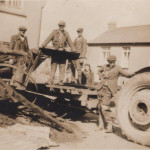
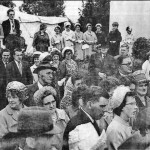
1960’s and 1970’s North Petherwin Church Fete.
Photo’s courtesy of Gary Lashbrook.
North Petherwin’s Fallen from World War One.
Samuel Banbury
Samuel was born in 1883 to Samuel and Mary (nee Bray) Banbury at Kilford, North Petherwin and was the eldest of 5 children. His father was a Farmer. On leaving school, Samuel joined his Father to work on the farm. He initially enlisted at Launceston with the Duke of Cornwall’s Light Infantry (Regimental No 24021) but was subsequently transferred to the Duke of Edinburgh’s (Wiltshire Regiment) (Regimental No 28058) serving with A Company of the 1st Battalion. He was killed in action on September 18th, 1918 at the Battle of Epehy as the Allies were now pushing the Germans back.
After a lot of fighting and general reorganisation, the battalion ended up a Thiepval at the end of July remaining there throughout August. On August 24th they attacked Miraumont Ridge then five days later led the advance towards Beaulencourt which was captured on September 1st. They continued the advance beating of a determined attack on the 11th, followed by an attack on the 18th. The battalion were in action nearly every day.
His body was never identified but his name is commemorated on panel 9 of the Vis-en-Artois Memorial, Pas de Calais, France as well as on the North Petherwin War Memorial.
Samuel John Davey (With thanks to Ron Mason)
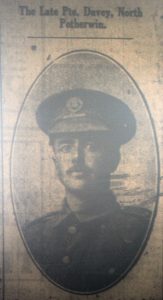
Samuel was born in 1889 at Trecarne, Tintagel to Samuel and Kate (nee Glover) Davey. His Father was a Cattleman. The family moved to Egloskerry in 1901. On leaving school, Samuel went to work for Mr Thomas Parkin at Higher Whiteleigh Farm, Maxworthy as a Cattleman. Samuel was a member of the Maxworthy United Methodist Church and a local preacher in the Week St. Mary circuit. He enlisted at Launceston with the Duke of Cornwall’s Light Infantry (Regimental No. 15459) serving with the 7th Battalion who were part of 61st Brigade. After his training, he went with the Battalion to Salonika. Here he was wounded, and after recuperating at home he was drafted to France. He died of his wounds sustained fighting on the first day of the Battle Of Cambrai on November 20th, 1917. He is interred at the Gouzeaucourt New British Cemetery, Nord France, Plot 3, Row A., Grave 6. He is also commemorated on the North Petherwin War Memorial. At the time of his death, his parents were living at Troswell before moving to East Roose, Otterham, Camelford.
Attacking the Hindenburg Line and Hindenburg Support in the vicinity of La Vacquerie and Welsh Ridge, 60th Brigade, with 6th Oxford and Buckinghamshire Light Infantry and 12th King’s Royal Rifle Corps leading, had 24 tanks to support its attack; 61st Brigade, led by 7th Duke of Cornwall’s Light Infantry and 7th Somerset Light Infantry, having 36 tanks. Once the initial line had been taken, 59th Brigade were to move up and seize the crossings of the St Quentin Canal between Masnieres and Marcoing, and then hold these as 29th Division passed through.
Moving off at 06.20 despite fierce opposition the attack went exactly as planned, the initial objectives being captured by 09.25, the support battalions, 6th King’s Shropshire Light Infantry and 12th Rifle Brigade for 60th Brigade and 12th King’s (Liverpool Regiment) and 7th King’s Own Yorkshire Light Infantry for 61st Brigade, securing these by 11.00. At the same time the advance guard of 59th Brigade, 10th Rifle Brigade and 11th Rifle Brigade with a troop of 1/1st Northumberland Yeomanry, were passing through on their way to secure the canal crossings.
George Gilbert
George was born in 1896 one of eight children, to Daniel and Mary Grace (nee Horrill) Gilbert at Petherwin Gate, North Petherwin. His father was an Agricultural Worker. On leaving school George went to work for Mrs Jane Dinnis at Hellescott, North Petherwin as General Farm Worker.
He enlisted at Tavistock as a Private with the Devonshire Regiment (Regimental No. 16639) serving in the 9th service Battalion. He was killed during the Final Advance In Picardy on October 26th, 1917 aged 21. His body was never identified but his name is commemorated on the Tyne Cot Memorial (Panels 38 -40). He is also commemorated on the North Petherwin War Memorial.
The Final Advance In Picardy was the hardest-fought of the final offensive actions. First, Third and Fourth Armies exploited their success in breaking the Hindenburg Line by pushing on across the Rivers Selle and Sambre, recapturing Valenciennes and finally in liberating Mons – where it had all begun for the British Expeditionary Force more than four years before. In early October the 9th Battalion broke through the German line at Beaurevoir on the Somme and on the 23rd captured Pommereuil despite high casualties.
Kenneth Reed Gubbin
Kenneth was in 1894 to Francis and Catherine (nee Rogers) Gubbin at North Petherwin. His Father was a Restaurant Proprietor and Confectioner and the family were residing at 8 East Street, Taunton in 1901 but in 1904 Francis died. By 1911 Kenneth had returned to Cornwall and was working as a Waggoner for Mr Samuel Prout at Trebeath Farm, Egloskerry. His mother moved to Trillacott, North Petherwin.
Kenneth enlisted as a Private with the Duke of Cornwall’s Light Infantry (Regimental No 15587) serving with the 8th Battalion in Greece. During his service, he saw action at the Battle of Horseshoe Hill in 1916, the Battle’s of Dojran in 1917 and 1918, and finally the Pursuit To The Strumica Valley, where the Allies pushed the Bulgarian Army back until their final surrender at the end of September 1918. The Salonica Armistice was signed by Bulgaria on 29th September 1918 and hostilities ceased on September 30th. He rose in the ranks finally ending up as Quarter Master Sergeant. Kenneth died at the 29th stationary hospital Turin of Pneumonia on December 1st, 1918 aged 24. He was interred in the Turin Town Cemetery, Italy in a small plot against N. West side. He is also commemorated on the North Petherwin War Memorial
John Henry Hutchings
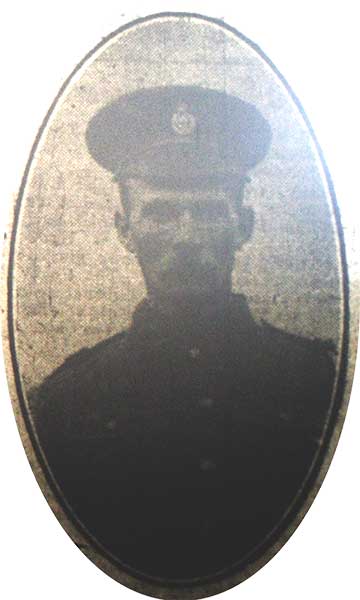
John was born in 1883 to Thomas and Amelia Hutchings at South Sydenham, Devon. His father was a General Labourer. The family moved to North Petherwin, and in 1891 were living at Daws Cottage, North Petherwin. In 1909 he married Blanche Jane and they set up home at Tregoiffe, Linkinhorne where he worked as a Farm Labourer. The family were living at Hurdon, Launceston at the time of his death, although his wife was shown as living at South Battens, North Hill.
He first joined the Royal Veterinary Corps (A.V.C. 19884) but was transferred to the Alexandra, Princess of Wales’s Own (Yorkshire Regiment) as a Private (Regimental No 33969) serving with the 13th Battalion of D Company.
He was instantly killed when a shell exploded near a trench he was guarding on January 1st, 1918 and is buried at the Mory Abbey Military Cemetery, Mory, Departement du Pas-de-Calais, Nord-Pas-de-Calais, France, Plot: II. A. 9. He is also commemorated on the Launceston and North Hill and North Petherwin War War Memorials.
Alfred Martin
Alfred was born in 1898 at Tredidon, St. Thomas, Launceston to Samuel and Emma Martin. His father was a Farm Labourer. In 1911 the family were living at Tredundle, Egloskerry although by 1917 they were residing at Weston farm, North Petherwin.
Alfred enlisted at Launceston with the Devonshire Regiment (Regimental No 33295) serving with the 8th service Battalion. He died at home of his wounds sustained in battle on the 7th of June 1917 aged 19. He was interred at the Bordon Military Cemetery. He is also commemorated on the North Petherwin War Memorial
William James Phillips
William was born on the 9th of August 1893 to Henry and Fanny (nee Rowland) Phillips at South Moor Cottage, Whitstone, Cornwall. His father was an Agricultural Labourer. He enlisted at Launceston initially with the Duke of Cornwall’s Light Infantry (Regimental No. 18649) but he was later transferred to the Gloucestershire Regiment (Regimental No.40077) serving with the 12th (Service) (Bristol) Battalion part of the 5th Division. He died of his wounds on November 15th, 1918 just 4 days after the armistice aged 25. He left a widow, Mary A. Phillips (nee Banton) of Egginton, Derby and a son, John Henry Phillips born after his death in 1919. He is buried at the St. Sever Cemetery, Rouen. He is also commemorated on the North Petherwin War Memorial.
The division returned to France from Italy in April 1918, occupying positions in the line near Nieppe Forest, and the battalion saw action on April 25th and June 28th, both times successfully advancing the front line. Its last action came during the Second Battle of Bapaume, where it suffered some 100 casualties on 21 August but succeeded in capturing Irles on August 23rd. On October 6th, the battalion was disbanded and its men distributed among the other units of the 5th Division.
Charles Shepherd Symons

Charles was born in July 1892 at Brazacott the only son of William and Norah (nee Shepherd) Symons. His father was a farmer first at Brazacott, North Petherwin, then the family moved to farm at Honiton Farm, South Petherwin by 1901. On leaving school, Charles went to work on his uncle’s farm, William Pearse at Trerithick, Altarnun. He was a local Wesleyan preacher for the North Hill Circuit. It was whilst living at Trerithick that he joined the 1st Devon Yeomanry enlisting at Exeter. He was then transferred to the Devonshire Regiment, serving as a Private (Regimental No. 345310) with the 5th Battalion (Territorials) of the 29th Division. After training, he was drafted to Egypt in 1916 where he served in the fighting against the Turks. He was killed in action during the Battle of Amiens on August 24th, 1918. His body was never identified but his name is commemorated on the Memorial in Vis-en-Artois British Cemetery, Haucourt, Departement du Pas-de-Calais, Panel 4. He is also commemorated on the Altarnun War Memorial and his name is to be added to the Gulworthy War Memorial. At the time of his death, his parents were living at Woodovis, Tavistock.
The Battle of Amiens, also known as the Third Battle of Picardy (French: 3ème Bataille de Picardie), was the opening phase of the Allied offensive which began on 8 August 1918, later known as the Hundred Days Offensive, that ultimately led to the end of the First World War. Allied forces advanced over 11 kilometres (7 mi) on the first day, one of the greatest advances of the war, with Henry Rawlinson’s British Fourth Army playing the decisive role. The battle is also notable for its effects on both sides’ morale and the large number of surrendering German forces. This led Erich Ludendorff to describe the first day of the battle as “the black day of the German Army”. Amiens was one of the first major battles involving armoured warfare.
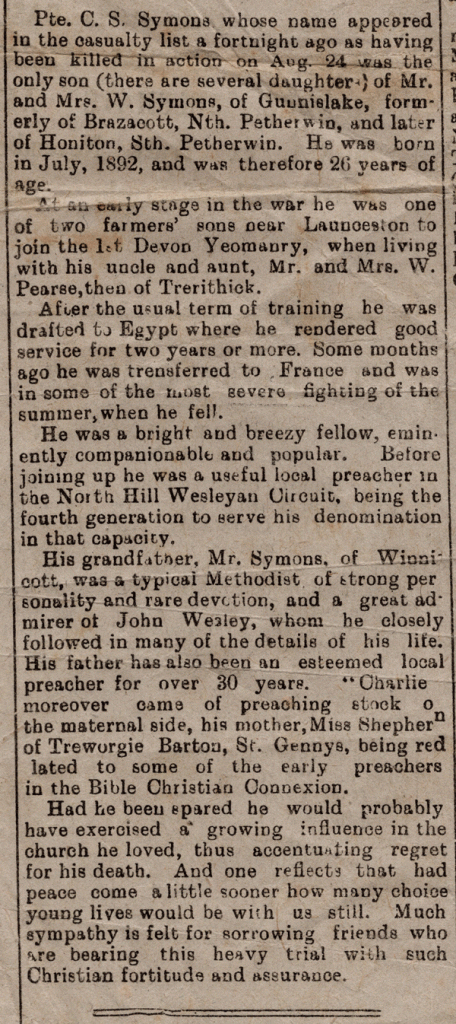
Harry Wills
Harry was born in 1882 to Alexander and Thomasine Parkian (nee Hill) Wills at Jacobstow, Cornwall. His mother died in 1886 and his Father remarried in 1887 to Mary Squance. His father had served in the Royal Navy. In 1891 the family were living at Tredundle Gate, Egloskerry. By 1901, Harry was working for Mr John Skinner at Darracott Farm, Boyton as a Horseman and by 1911 he was working for Mr Richard Hawke at Bodgate Farm, North Petherwin as a Wagoner.
He enlisted at Plymouth as a Private with the Devonshire Regiment (Regimental No. 30221) but was transferred to the Somerset Light Infantry (Regimental No. 204170) serving with the 6th Battalion part of 49th Brigade of the 16th Division. He was killed in action during the Battle of Langemark which was part of the Battle of Passchendaele (Also known as the Third Battle of Ypres) on August 23rd, 1917. He was initially buried at map ref: 28.J.14.c.50.35, Plot 61, Row B, Grave 6 and was re-interred at the Poelcapelle British Cemetery, West-Vlaanderen, Belgium, Plot 6, Row C, Grave 2. He is also commemorated on the North Petherwin War Memorial
Death, misery and mud, the Irish debacle at Langemarck 1917
North Petherwin’s Fallen from World War Two
William Henry Cobbledick
William was born in 1896 at Okehampton. He enlisted with the Royal Navy Stoker 1st Class (Service No. D/K 29420) serving throughout the First World War. He was killed whilst serving aboard ‘HMS Wryneck’ when she was sunk by German aircraft, whilst helping to evacuate Allied troops after the fall of Greece on April 27th, 1941. His body was never recovered but his name is commemorated on the Plymouth Naval Memorial, Panel 52, Column 3. He is also commemorated on the North Petherwin War Memorial.
HMS Wryneck was British Navy Destroyer Type Class W and was one of two British destroyers (D21) attacked by German Stuka aircraft and sunk off Nauplia, Greece. She was helping in the evacuation of troops from Greece, and in the process had picked up, with the help of another destroyer HMS Diamond, around 700 troops and crew from the 11,600 ton Dutch liner Slamat, now converted as a troopship and under British control, which had been attacked and damaged earlier. Of approximately 950 troops and crews of both ships only one officer, fourteen naval ratings and eight soldiers were rescued. Source www.wrecksite
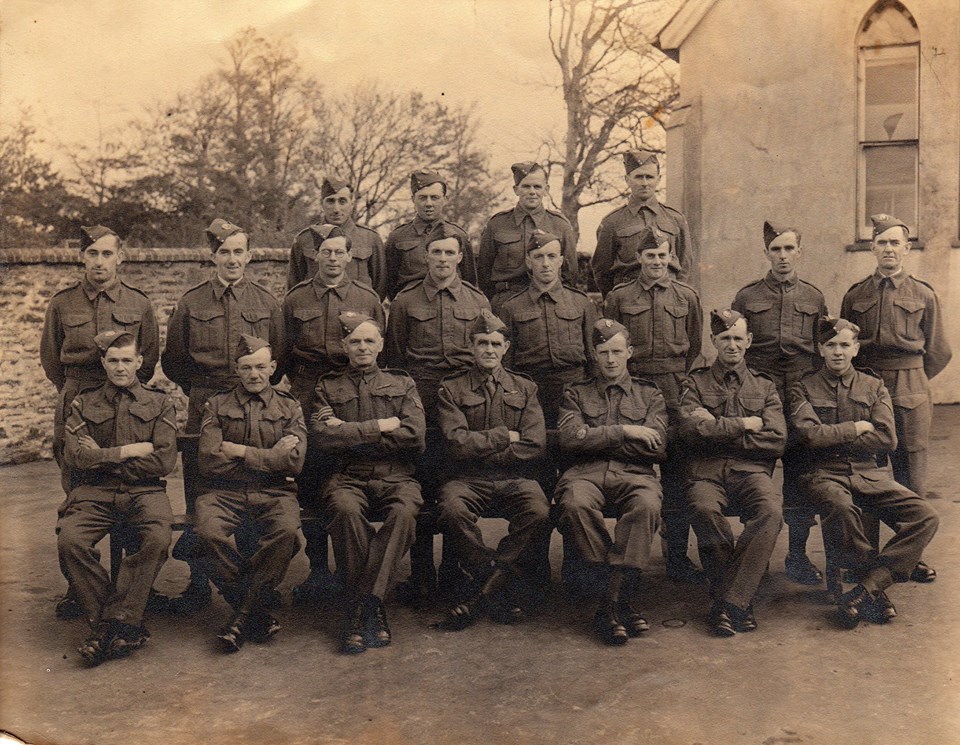
North Petherwin Homeguard. Photo courtesy of Charles Tucker. 3rd row from left: ?, ?, Frank Jones, ?
2nd row from left Albert Werren, Gordon Uglow, ? Fry, Jack Sloman, Tom Werren
1st row Roy Neale, ?, Will Ridgman, Charlie Hilson, ?, Dan Gilbert ?, ?.
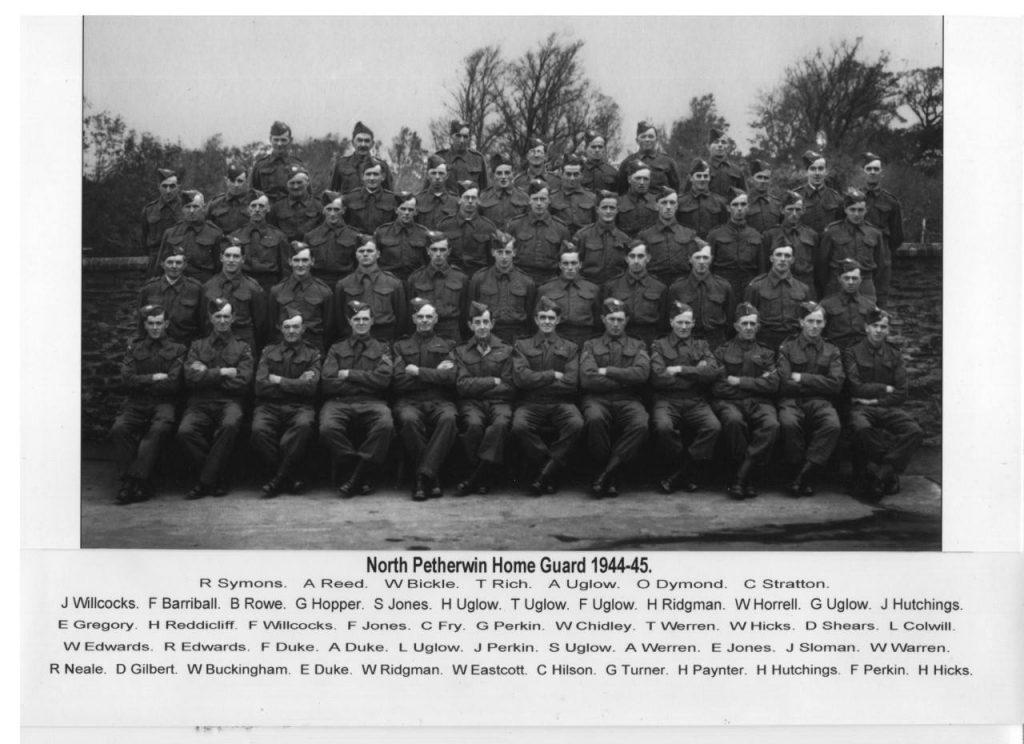
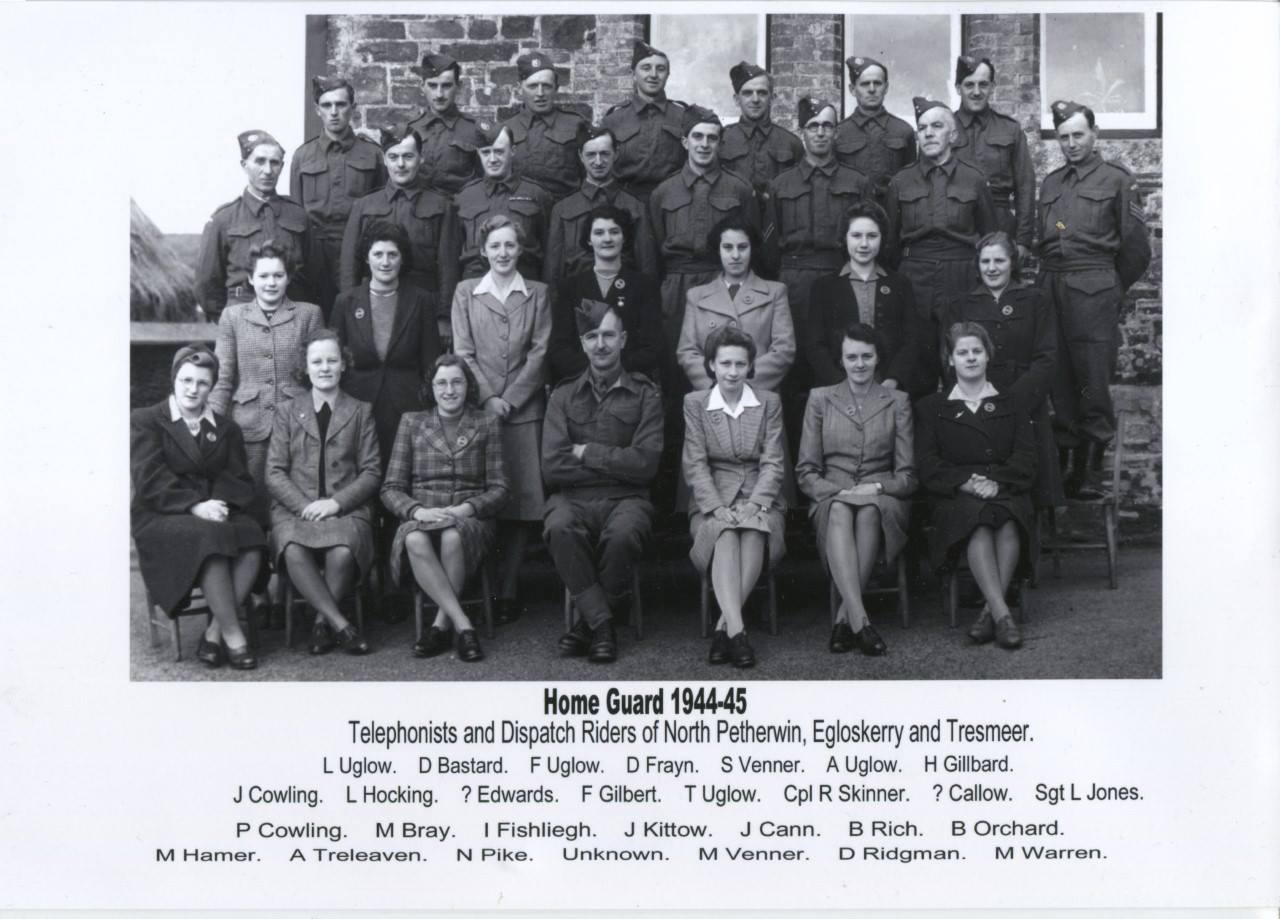
Visits: 777

